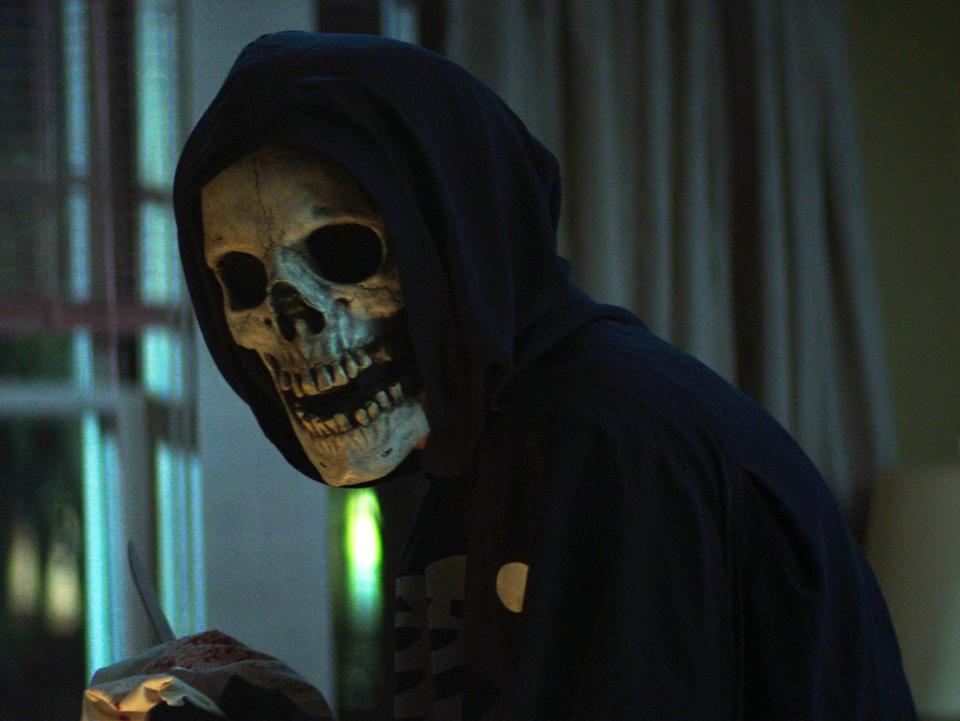Fear Street Part One: 1994 review: A bloody Nineties throwback that’s oddly warm and comforting
Dir: Leigh Janiak. Starring: Kiana Madeira, Olivia Welch, Benjamin Flores Jr, Julia Rehwald, Fred Hechinger. 18, 107 mins.
The Nineties – in all their cargo pant, claw clip, Friends-obsessed glory – have made a comeback of late. Millennials crave the nostalgia; for Gen Z, it’s a possible key as to why their generational predecessors are all so permanently anxious. It’s all a natural successor to the Eighties boom that first birthed Netflix’s Stranger Things, the miniature horror sensation. At some point, it was inevitable that the streaming service would attempt to resurrect the legacy of one of the Nineties’s most prolific horror writers, RL Stine. His most popular series, the kid-friendly Goosebumps, was already rebooted for the big screen back in 2015, with a sequel in 2018.
But, as charming as those films were, they existed primarily to capture a new, younger audience. Netflix’s latest trilogy of films, based on Stine’s darker, more teen-adjacent Fear Streetbooks, is far more entrenched in the spirit of the era. Any comparison to Stranger Things, which is firmly rooted in Spielbergian, erases how specific and carefully curated its references are. Its first instalment, set in 1994, is a super-charged throwback, laced with giddy memories of childhood sleepovers, trembling hands holding flashlights up to faces, and creaky, old urban legends so familiar that they gain a life of their own. Though the film sprays blood with the glee of an artist’s brush (it’s, in fact, rated 18), there’s also something oddly warm and comforting to it.
Fear Street is set in a town that’s both anywhere and nowhere – Shadyside, where segregation has taken on a paranormal essence. The town has been cursed by decades of spontaneous violence, where ordinary citizens have turned on each other without warning or explanation, while their rich, white neighbours in Sunnyvale look on with disdain. When Samantha (Olivia Welch) moves from Shadyside to Sunnyvale, her girlfriend Deena (Kiana Madeira) feels understandably betrayed. The two drift apart – it seems that only a mall killing spree by a man in a skeleton mask could ever hope to bring them back together.
Janiak, who’s also behind the follow-ups set in 1978 and 1666, set to debut over the next two weeks, treats classic horror iconography with a playful reverence, just as Stine himself does. The camera winds through suburban homes as killers lurk behind foliage à la Halloween; the film’s mall-set, neon-drenched opener, starring Stranger Things’s Maya Hawke (Janiak is married to Ross Duffer, one of the show's creators), offers a clear nod to Scream. The film’s interconnected sense of history, as Deena’s brother (Benjamin Flores Jr) pieces together the links between the town’s semi-regular massacres, feels in tune with the novels of Stephen King or 2007’s cult anthology film, Trick ‘r Treat.

Even the film’s cast, particularly Fred Hechinger as Deena’s meat-headed slacker friend Simon, enthusiastically play up the stereotypes of the potential slasher victim – they’re plenty likeable, but also aggravating enough that it’s more fun to watch them be cut into a thousand, tiny ribbons. Janiak’s skill is invoking the familiar without draining her film of its vitality – there are no shortcuts here, as each scene still builds steadily and steathily to its phantasmagorical climax. As Fear Street goes to show, old horrors can still breed new nightmares.
Read More
David Harbour says his kitten helped him out of severe alcoholism
‘A Marvel universe with horror movies’: Netflix’s Fear Street is a ready-made film franchise
Fear Street Part Two: 1978 review – As giddy, gory, and thoroughly self-aware as its predecessor

 Yahoo News
Yahoo News 
